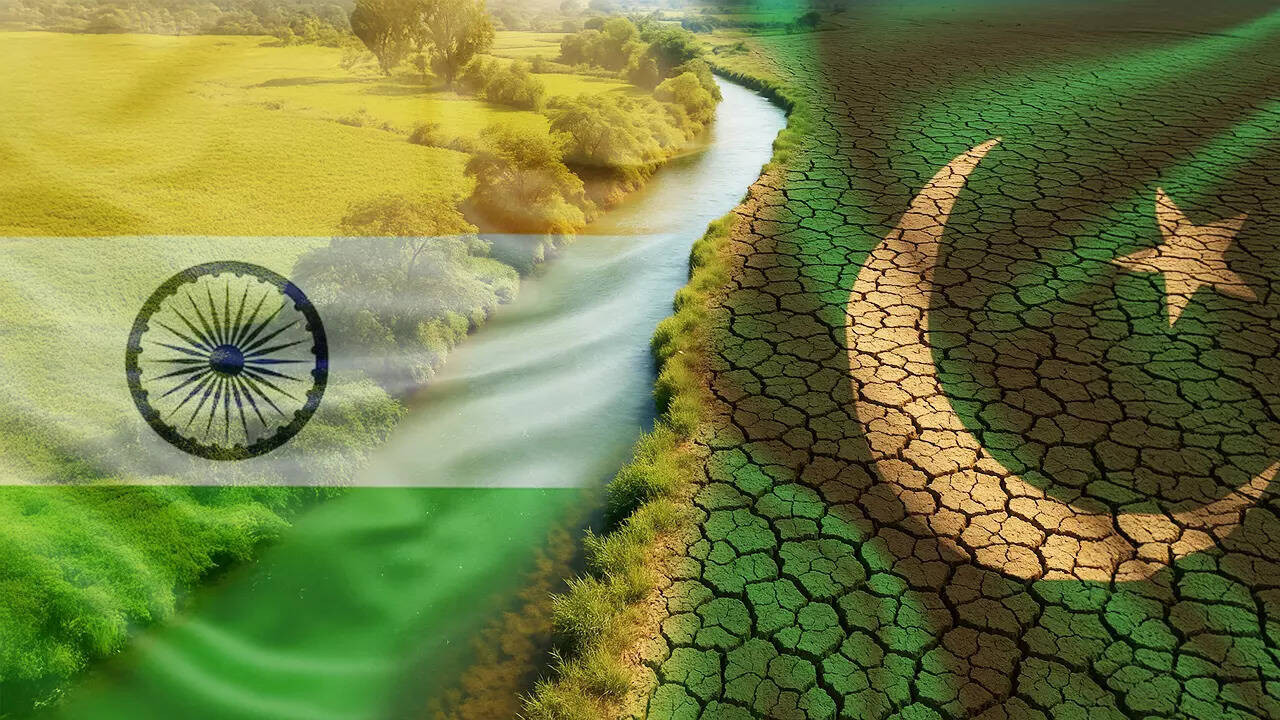Following the Indus Waters Treaty suspension, India is optimizing the Indus river system, looking to construct a 113-km canal to redirect water to Punjab, Haryana, and Rajasthan. This inter-basin transfer aims to maximize water usage from eastern rivers and fully utilize India’s share of western rivers, potentially limiting Pakistan’s water access.
Thirsty Neighbors? India’s Indus River Moves and a Worrying Dip Across the Border
Alright, let’s talk water. It’s life, right? And when one nation controls the faucet, things can get… complicated. There’s been a bit of a stir brewing about water sharing between India and Pakistan, specifically concerning the Indus River and its tributaries. Headlines are hinting at India “bleeding Pakistan dry,” and while that’s definitely a grabby way to put it, the underlying story has significant implications for both countries.
Let’s dive into what’s actually happening, stripping away the sensationalism and focusing on the facts on the ground (or, rather, in the rivers).
The Indus Waters Treaty, a landmark agreement brokered back in 1960, divvies up the waters of the Indus River system between India and Pakistan. This treaty assigns the waters of the three eastern rivers – Beas, Ravi, and Sutlej – to India, while Pakistan gets the three western rivers – Indus, Jhelum, and Chenab. Sounds straightforward enough, doesn’t it?
Well, not quite. The treaty allows India to use the western rivers for irrigation, power generation, and domestic consumption, but with restrictions designed to prevent significant interference with the water flow to Pakistan. This is where the current tension seems to be stemming from.
Recently, reports have highlighted dwindling water levels in Pakistani dams, raising concerns about potential agricultural and economic hardship. Some are pointing fingers at India, suggesting that increased Indian usage of the Indus basin rivers is directly responsible.
Now, is India deliberately trying to starve Pakistan of water? That’s a loaded question. The truth is likely far more nuanced. India has been developing hydropower projects on the western rivers for years, adhering to the treaty’s provisions, as it interprets them. These projects, like the Kishanganga and Ratle hydropower plants, have faced objections from Pakistan, who argue they violate the treaty’s design parameters. There are ongoing disputes about their design and operation.
Think of it like this: you and your neighbor share a well. You’re both allowed to draw water, but there are agreed-upon limits. You decide to upgrade your pump, staying (you believe) within the rules. Your neighbor, however, argues the new pump is sucking up more than your fair share, leaving them with less. That’s the essence of the current situation.
But let’s not pretend this is only about the technicalities of the treaty. There’s a deeper layer of geopolitical strategy here. Water is a resource, and controlling its flow is a form of power. India’s assertive approach to water management in the Indus basin could be interpreted as a message to Pakistan, a subtle reminder of its geographical advantage and potential leverage.
Adding fuel to the fire is India’s ambitious plan to build more infrastructure on the Indus River. We’re talking about potentially larger projects that could significantly alter the river’s flow. While India insists these projects will comply with the treaty, Pakistan is understandably wary. They’ve seen this movie before, and they’re not thrilled with the sequel.
Beyond the finger-pointing and political maneuvering, there’s a larger issue at play: climate change. Rising temperatures, changing rainfall patterns, and glacial melt are impacting the entire Indus basin. These changes are predicted to lead to increased water scarcity in the future, making cooperation and responsible water management even more critical.
So, what’s the takeaway? The Indus Waters Treaty, while a remarkable achievement of diplomacy, is facing a serious stress test. Increased water demand, infrastructure development, and the looming threat of climate change are putting pressure on the agreement.
The solution isn’t simply about blaming each other. It requires a renewed commitment to dialogue, transparency, and a willingness to adapt the treaty to the realities of the 21st century. Both India and Pakistan need to recognize that the Indus River isn’t just a source of water, it’s a shared lifeline. The health of this river, and the prosperity of the communities that depend on it, hinges on their ability to find a sustainable and equitable solution.
Perhaps less focus on the headlines and more on genuine collaboration is what’s really needed. After all, a parched neighbor is rarely a good neighbor.







